A Rediff reader recently travelled to Bihar's remote naxal effected district of Jamui... to attend a wedding!
Snapshots from an unforgettable journey
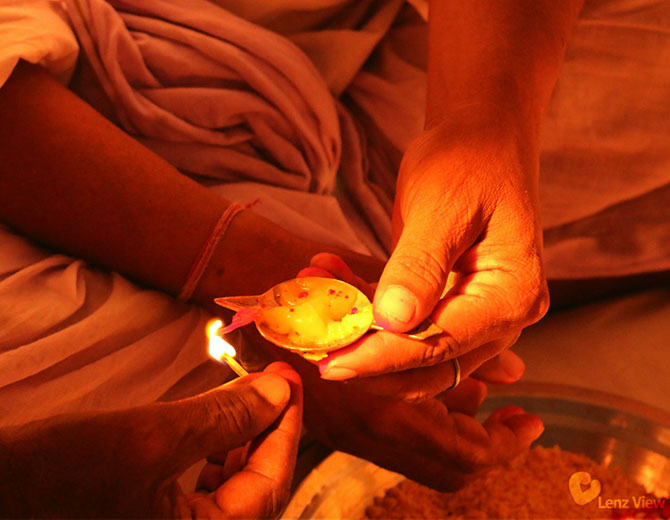
A Mumbai local takes fifty six minutes to reach CST from Nerul, Navi Mumbai, but when your intention is to board a long distance train, a single minute delay can cause bouts of anxiety to run down your spine, especially if one is travelling to attend a marriage.
We had started early but as bad luck would have it, the local had been halted abruptly during the morning rush-hour.
Fortunately, for me and my host, who was accompanying me to his ancestral village in Bihar, we managed to board the train well before it rolled out from the platform.
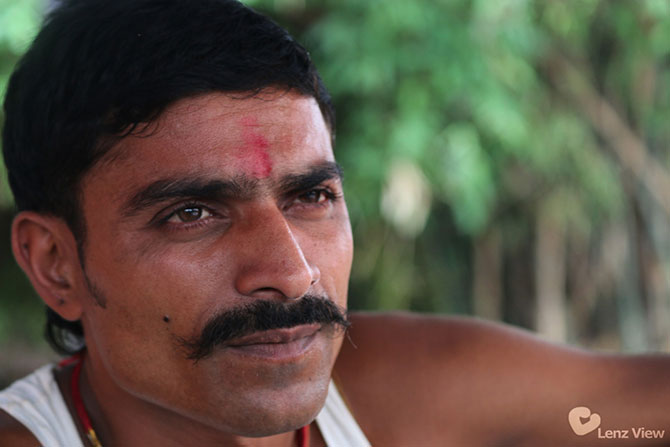
The next day around dusk we got down at Mokama, a well known old town famous for its ghat on river Ganga.
We hired a cab to our next stop at Rajoura which is situated on the northern plains of Ganga.
Rajoura, a small block in Begusarai district is infamous as a pocket borough of politically dominating Bhumihar Brahmins, most of who are involved in the business of securing government contracts.
My host representing the bride was here to attend the ceremony of tilak and faldaan -- a custom of giving gifts, fruits and blessings to the would-be-groom.
By midnight, as the ceremony followed by stupendous dinner ended, the sharaati (a collective name for members of girl's family) moved to one of the roofs of the building, where arrangements for people to rest were made.
Cots were orderly arranged with hand strewn bedding called gayndari spread on them.
Since it was mid June, when heat waves lash through the plains, almost every household in the village had carried their beddings on their roofs to sleep.
Women, who had to stay indoors as a matter of culture, meanwhile, spread themselves under an open sky for comfort.
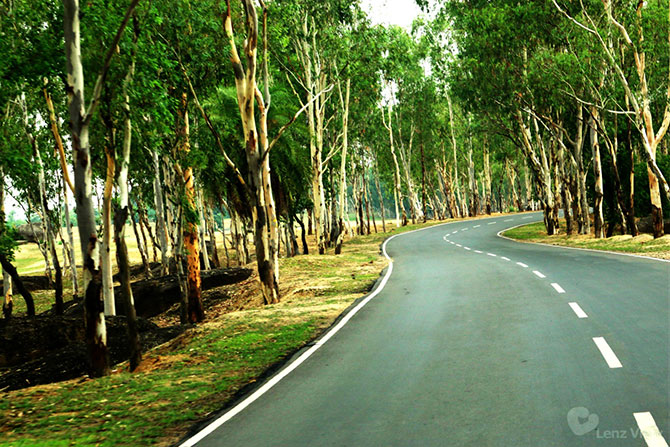
Early morning we hit the road again, this time to the bride's village, where most of the action followed.
Tucked away in southern Bihar district Jamui, lies a small village Kendua.
The well spread out village comprises people from different castes.
It has sporadic electric supply and limited network connectivity.
But that hasn't stopped shops from offering services like loading twenty five songs into their mobile for a nominal rate of ten rupees.
In fact the businesses grew so well that it has made solar power industry find a foothold in this far flung area.
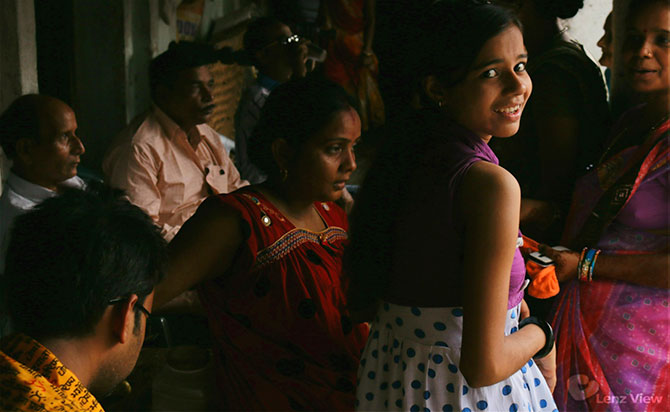
When we arrived at the seven-decade old house, two days prior to marriage, it was already filled with relatives and guests.
The family had a custom that required them to perform marriages in their ancestral home as they had their deity, the goddess of the clan ensconced there.
Earlier, it was difficult to reach Kendua as the nearest railway station, which is at a distance of twelve kilometres didn't have any direct service connecting the village.
I'm told the village is surrounded by rivers that flood during monsoon.
Luckily for villagers, the last assembly election came as a boon, which led to roads and bridges being laid.
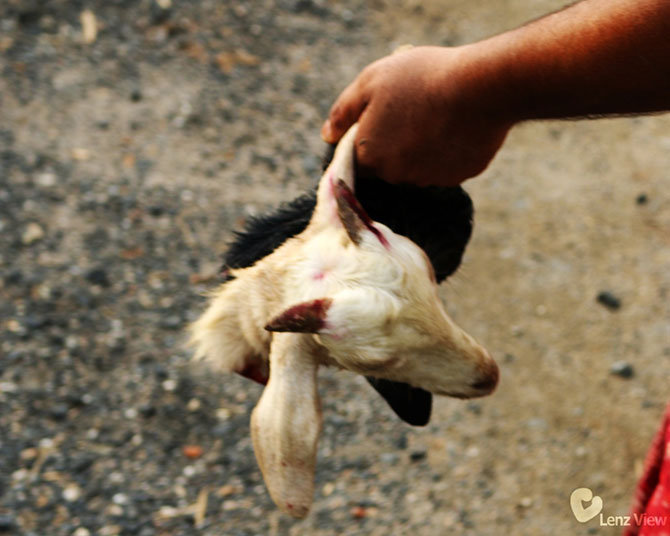
At noon, preparations were running in full swing as the groom's party were scheduled to arrive in the evening.
The village had always offered sacrifices to deities on occasions like marriages.
In a famed Kali temple collectively built by villagers, two billy goats were sacrificed.
Unlike other Brahmins who observe a strict vegetarian diet in auspicious ceremonies, this family believed otherwise and their practice of offering mutton for the feast was widely accepted and heartily appreciated.
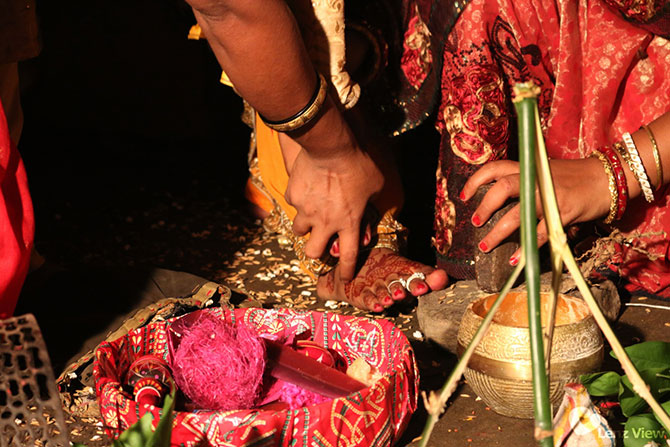
The marriage ceremony which continued till dawn had many interesting rituals like the one where the groom is asked to touch the bride's feet.
For the groom who is surrounded by the fairer sex taking pot shots on him and his few male friends in attendance, completing the ritual is an uphill task.
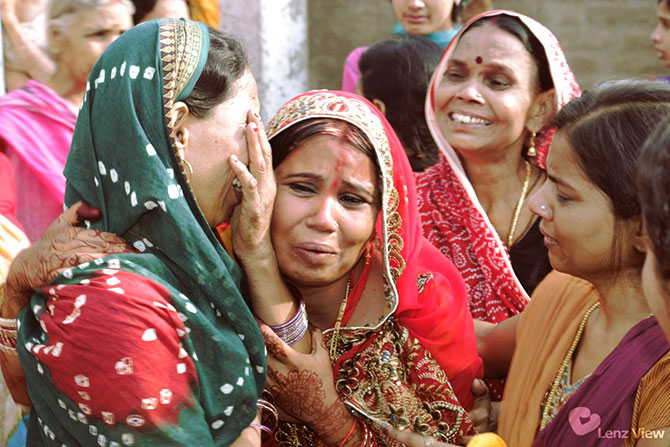
It was natural for the bride to fill up with tears of yearning.
So many of her relatives had come to attend her marriage and had stayed with her for few days giving her precious little memories that will unfold many years down the line.
It's difficult to imagine such marriages in the cities, where grandeur and splendour overshadows the tidbits from relatives, family and friends.

Late afternoon, after a few hours of a nap under a pandal, I left for Jhajha, onward to my next destination -- Kolkata.
As my vehicle left behind a single-storey sprawling structure painted pink, I passed by a teenage girl paddling her cycle on the curvy road.
The state government, as a matter of policy, had provided girls with cycles to encourage them to pursue education.
I don't know how much a bicycle will help in providing quality education to girls in these parts of Bihar, but girls riding bicycle along men in a traditionally patriarchal society will definitely change the landscape for good.
Text and Photographs: LenzView
Lenz View is a travel photographer and writer.
ALSO READ: Have you been to the Thirparappu Falls in Kanyakumari?
What is your favourite lesser-known attraction in India? We'd love to know.
Please write in to travelpicsga@rediffmail.com (subject line: 'Travelling the lesser-known'), along with photographs of the destination you are writing about. We'll publish the best ones on Rediff.com












 © 2025
© 2025